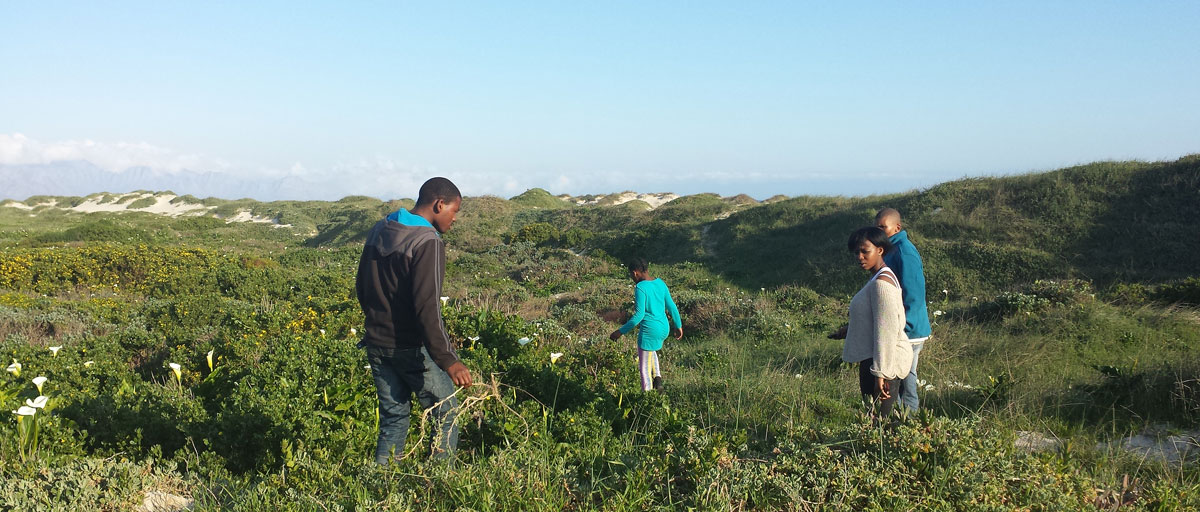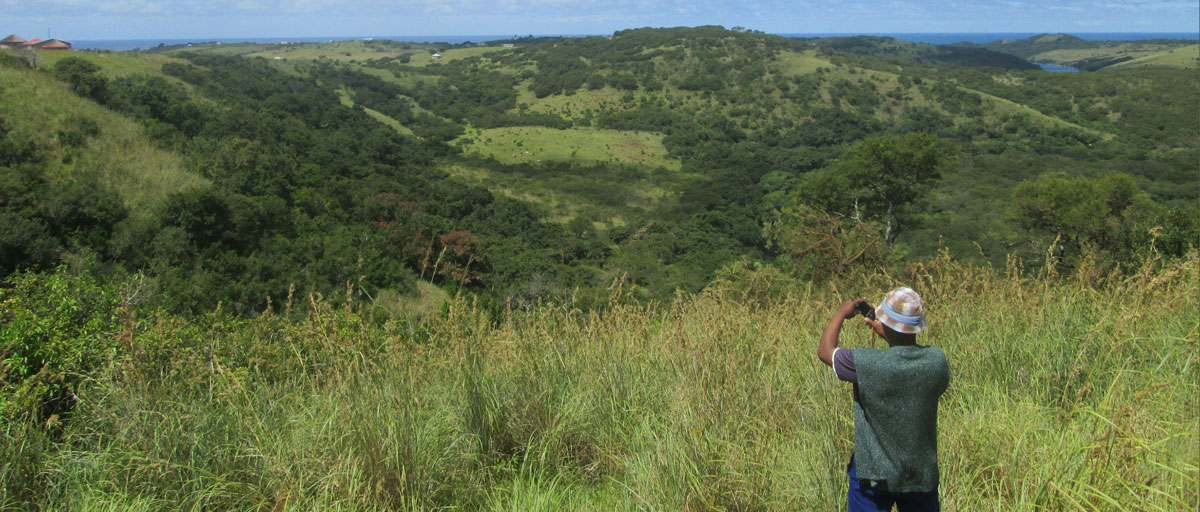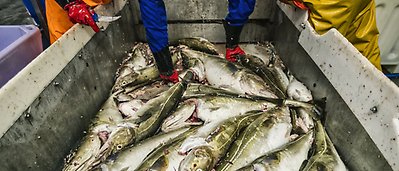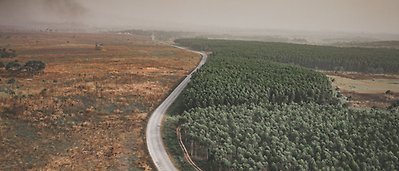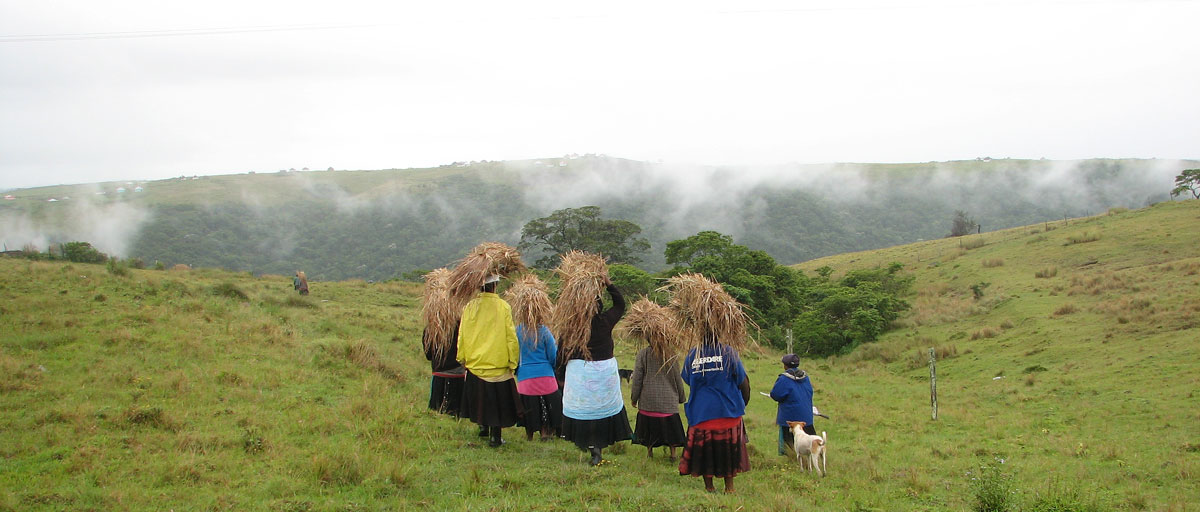
The proposed declaration of a nature reserve in the coastal scarp forest region of the Eastern Cape Province of South Africa caused disagreements amongst several parties, eventually obstructing the implementation of the nature reserve. A new study looks at whether the disagreement could be related to how these parties perceive and find meaning in the region. Photo: V. Masterson
Bildtext får vara max två rader text. Hela texten ska högerjusteras om den bara ska innehålla fotobyline! Photo: B. Christensen/Azote
Conservation and development
Out of place?
New paper explores links between conservation, development and sense of place on the Wild Coast of South Africa
• Study looks into a proposed co-managed nature reserve in the in the Eastern Cape Province of South Africa.
• Three broad narratives about the conservation project and the landscape were identified which show the conflicts amongst interest groups involved: the first on conservation and restoration; another on development: and a third on exclusion from nature.
• Engaging with a pluralism of place meanings can help to understand different interpretations of landscape change which is suggested as key to build consensus in future conservation interventions.
In 2009, an internationally-funded conservation project started a legal process to declare a nature reserve in the coastal scarp forest region of the Eastern Cape Province of South Africa. The nature reserve was to be based on the principle of a co-management, which means several parties and interests were involved, including impoverished and diverse local communities and multiple government authorities. The project also promised associated economic development activities related to employment and tourism. However, disagreements arose amongst these parties, eventually obstructing the implementation of the nature reserve.
Could this outcome be related to how these parties perceive and find meaning in this place?
Several aspects of such a local "sense of place" is explored by centre researchers Vanessa Masterson and Maria Tengö in a recent article published in Society and Natural Resources.
“While there has been a lot of interest in the social underpinnings of sense of place, we emphasize that the biophysical environment also contributes to sense of place as providing the raw material for meanings as well as enabling or constraining particular experiences in a place,” they write. By combining these perspectives, the authors take a social-ecological approach to sense of place.
Despite a general awareness of the social–ecological complexities within which conservation interventions are embedded, approaches to understanding a diversity of local perspectives of heterogeneous landscapes and how they matter for the outcomes of these interventions are seldom demonstrated.
Vaness Masterson, lead author
Three narratives
The paper, which is written together with Professor Marja Spierenburg, an anthropologist from Radboud University in the Netherlands, is based on interviews with local residents in three villages adjacent to the nature reserve, and conservation and forestry authority officials involved in the project. Based on these interviews, as well as village meetings and informal discussions, the researchers identified three broad but conflicting narratives about the conservation project and the landscape: two supporting the project and one opposing it.
Narrative 1 is in support of the project and sees opportunities for restoration of biodiversity and wilderness, e.g. because biodiversity is protected through fencing from illegal resource extraction and alien invasive species.
Narrative 2 is also in support and emphasizes hope for development and poverty reduction, e.g. offering community income through forest guard employment and ecotourism.
Narrative 3, on the other hand, is in opposition of the project and associates it with the historical exclusion of local people from indigenous forests during Apartheid. The opponents of the project state proudly that their fathers resisted similar plans in the 1960s, and so they will resist the latest attempt to take their land.
"This narrative also draws on customary norms to build legitimacy for the sacred values and belonging attributed to the forest and community land," the authors write.
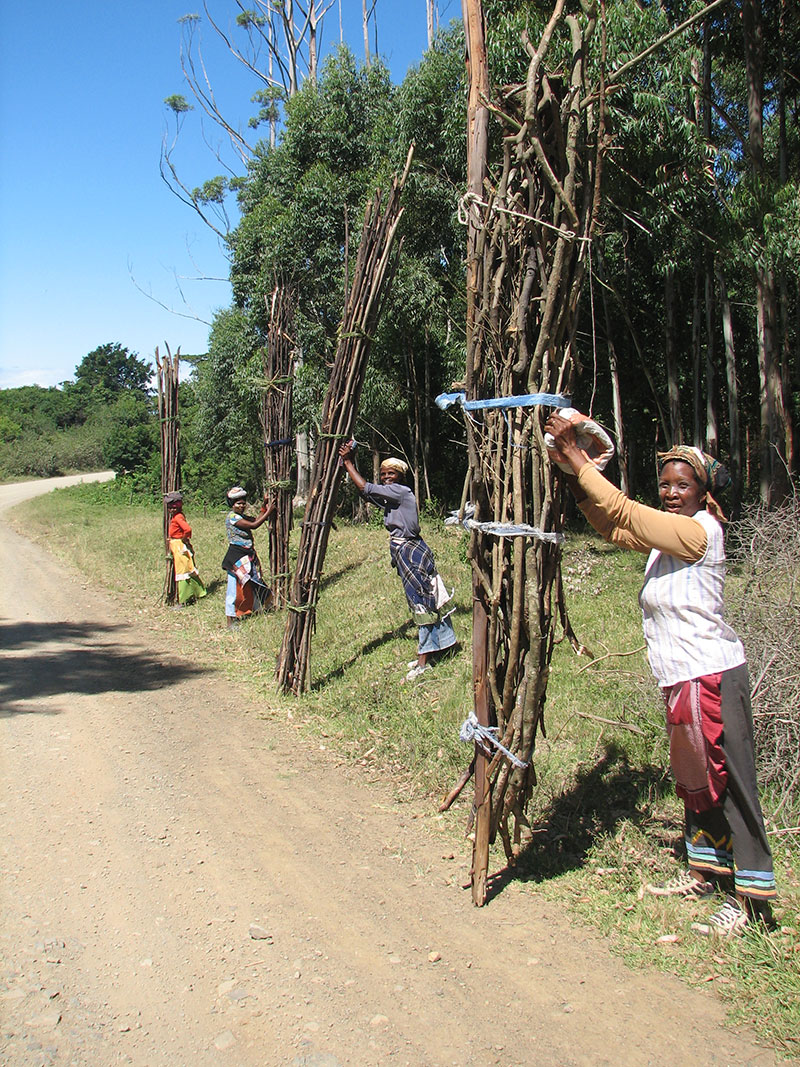
For many in this area, the forest represents a resource to be used for developing the communities, but people also view the forest as a sacred space for cultural rituals. However others view the forest as exploited wilderness in need of protection. Photo: V. Masterson
Same landscape, different views
Masterson, Tengö and Spierenburg underscore that the different narratives feature contrasting meanings of the landscape, for or against the conservation project. Unpacking these different meanings associated with the landscape indicates the importance of engaging more with multiple cultural values of nature when instigating nature reserves.
"Despite a general awareness of the social–ecological complexities within which
conservation interventions are embedded, approaches to understanding a diversity of local perspectives of heterogeneous landscapes and how they matter for the outcomes of these interventions are seldom demonstrated," they argue.
By categorizing the landscape into different “ecotopes” (based on a local cultural categorization of the landscape) the study shows that nature is interpreted differently through the narratives told about the project. Often these multiple meanings of these ecotopes were in conflict with each other. For example, the same forest area was viewed as “a wilderness vulnerable to resource exploitation” (in Narrative 1), “an asset for development and tourism” (Narrative 2), and “a sacred site for cultural rituals” (Narrative 3).
The authors conclude that the success of the opposing Narrative 3 in opposing the project, suggests that the failure to engage with multiple meanings and cultural values may lead to inappropriate or failed local conservation interventions.
"Therefore, we believe that transparent dialogue, respectful of a pluralism of place meanings attributed to the landscape, may identify potential common ground and the opportunity to build consensus in future interventions,"they write.
Methodology
The study was conducted in three neighboring villages of approximately 4000 people. Based on previous research on sense of place in the area, the authors inductively identified three broad narratives about the project and the landscape. The majority of interviews were conducted through a translator in the participants’ native language, isiXhosa. The identification of ecotopes was done through a snowball sampling process to identify key local informants who were knowledgeable about the history and ecology of the landscape. To further elicit views about the conservation project and the meanings ascribed to the ecotopes, the researchers conducted semi-structured interviews with 27 informants, representing a range of stakeholder groups affected by the project.
Masterson, V., Tengö, M. and Spierenburg, M. 2017. Competing Place Meanings in Complex Landscapes: A Social–Ecological Approach to Unpacking Community Conservation Outcomes on the Wild Coast, South Africa. Society & Natural Resources. DOI: 10.1080/08941920.2017.1347975 (Published online: 04 Aug 2017).
Vanessa Masterson's PhD focuses on understanding aspects of stewardship of ecosystem services (such as local knowledge, institutions and bio-cultural diversity) in the Eastern Cape, South Africa
Maria Tengö's research focuses on human-nature connections and implications for stewardship. Her research sets out to understand how positive connections between people and nature matter for moving towards trajectories of ecosystem-based management for human well-being.
